Endangered species with extraordinary adaptations remind us of nature’s resilience and diversity. These animals have developed unique features to survive in some of the world’s most challenging environments, from deserts and rainforests to freezing mountain ranges. Yet, despite their remarkable traits, many face threats from habitat loss, climate change, and human activities. Understanding these adaptations not only highlights their importance in the ecosystem but also underscores why protecting these species is crucial. Each one showcases nature’s creativity, evolving abilities that are both surprising and inspiring. Let’s explore some of these incredible species and the adaptations that help them endure.
Snow Leopard (Panthera uncia)
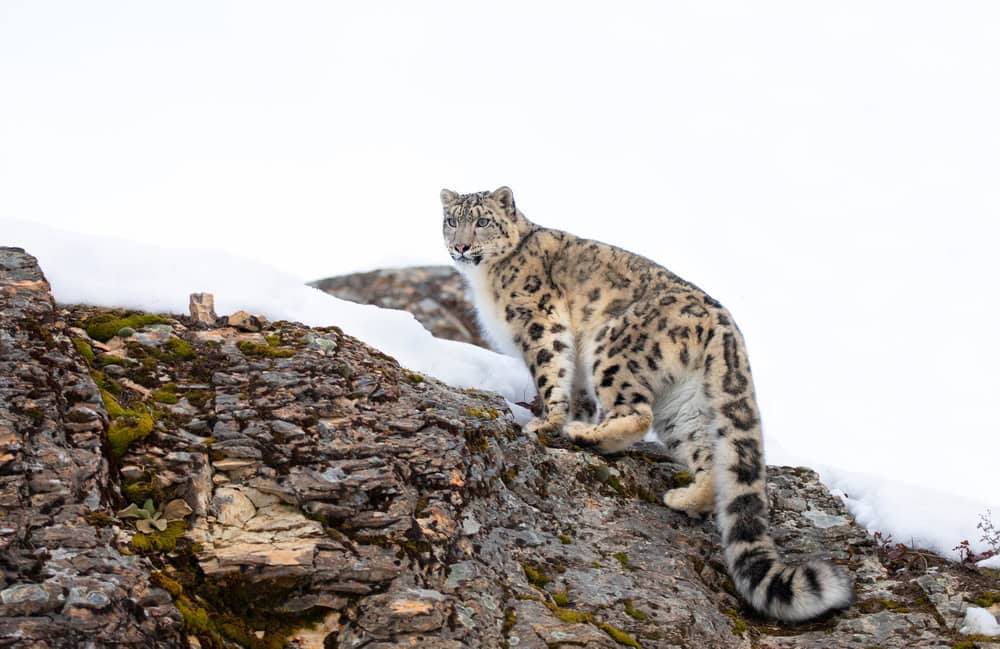
The snow leopard, native to the mountainous regions of Central and South Asia, has evolved several adaptations for survival in harsh alpine environments. Its thick fur, with a dense undercoat and long guard hairs, provides insulation against freezing temperatures. The smoky-gray coat, patterned with rosettes and spots, offers effective camouflage against rocky terrains. Large nasal cavities warm the cold air before it reaches the lungs, aiding respiration at high altitudes. Short forelimbs and long hind limbs facilitate powerful leaps, essential for navigating steep and rugged landscapes. A long, bushy tail aids in balance and can wrap around the body for added warmth during rest. Additionally, their wide, fur-covered paws act like natural snowshoes, distributing weight to prevent sinking into snow.
Fennec Fox (Vulpes zerda)
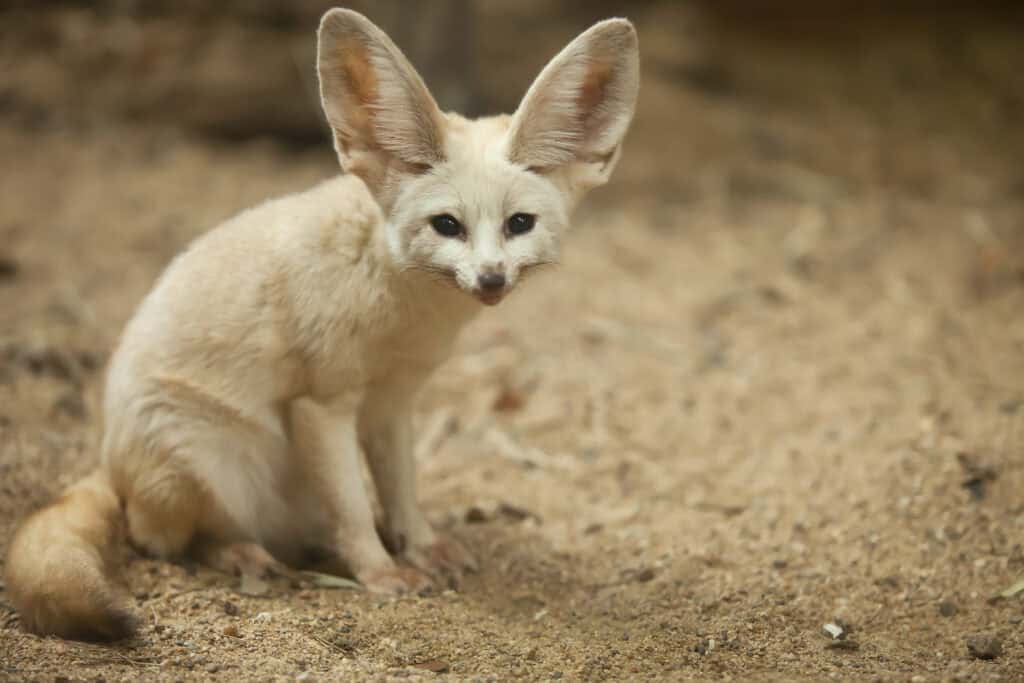
Inhabiting the Sahara Desert, the fennec fox is the smallest canid species, uniquely adapted to extreme arid conditions. Its large ears, measuring up to 15 centimeters, dissipate heat and enhance hearing to detect prey underground. A thick, sandy-colored coat reflects sunlight during the day and provides insulation against cold desert nights. Furry soles protect their feet from hot sand and aid in silent movement. Its kidneys are adapted to conserve water, allowing it to survive with minimal hydration. Nocturnal habits help avoid daytime heat, and they dig burrows to escape high temperatures. Their diet includes insects, small mammals, and plants, providing necessary moisture.
Axolotl (Ambystoma mexicanum)
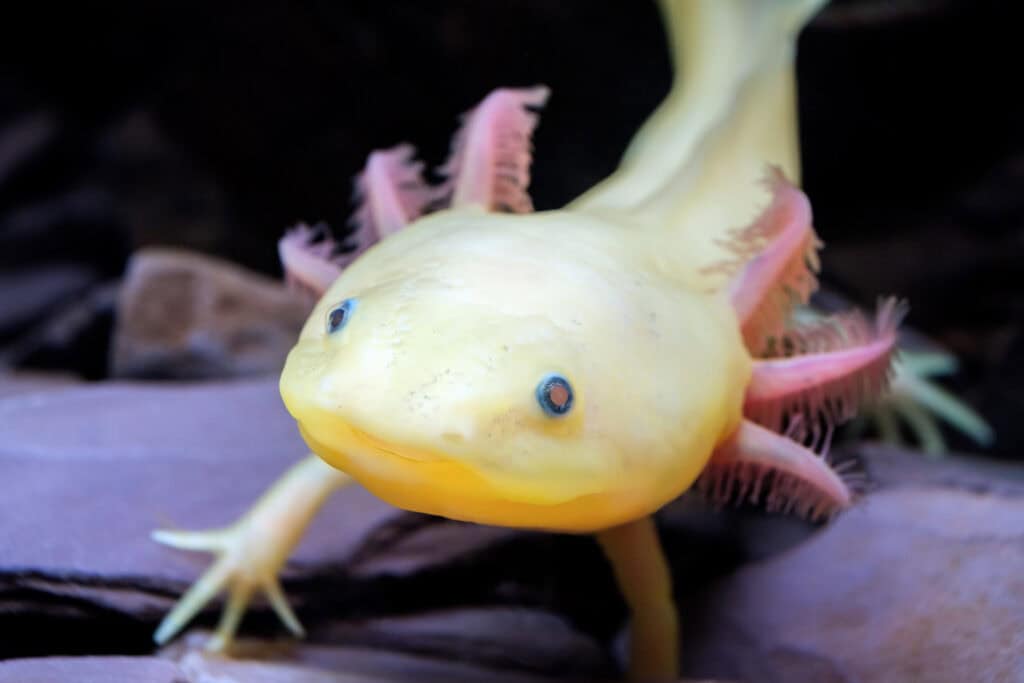
Native to Mexico’s Lake Xochimilco, the axolotl is a neotenic salamander, retaining juvenile features throughout its life. Its gills remain external, a feature unique among amphibians, allowing them to breathe underwater indefinitely. This species can regenerate entire limbs, as well as parts of its spinal cord, heart, and brain, making it a focus of medical research. Its ability to adapt to varying water temperatures contributes to its resilience in changing aquatic environments. Their diet consists mainly of small invertebrates, which they detect through sensory cells in their skin. They are able to remain in their aquatic larval form due to a genetic mutation that prevents metamorphosis, a rare trait among salamanders. Unfortunately, pollution and habitat loss have drastically reduced their numbers, making them critically endangered. Conservationists are working on breeding programs to reintroduce axolotls to protected habitats and raise awareness about their unique biology.
Philippine Eagle (Pithecophaga jefferyi)
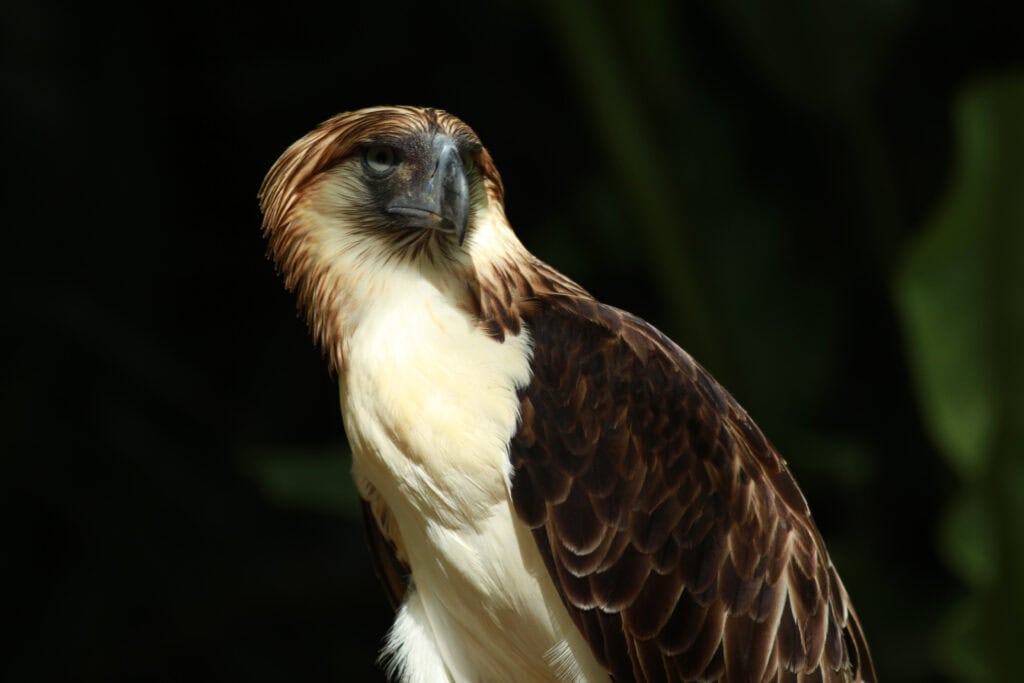
The Philippine eagle, also known as the “monkey-eating eagle,” is one of the world’s largest and rarest eagles, endemic to the Philippines. With a wingspan of over 7 feet, it is adapted to soar over dense tropical rainforests in search of prey. Its powerful, hooked beak and sharp talons are designed to grasp and consume small mammals, birds, and reptiles. Unlike other eagles, it has keen binocular vision that allows it to detect prey even under the forest canopy. Its elongated feathers on the head, forming a crown-like appearance, enhance its hearing by channeling sound. Its strong, broad wings are structured to maneuver through the dense trees of its forest home, a rare adaptation among raptors. Its low reproductive rate, with pairs only raising one chick every two years, makes it particularly vulnerable. Conservation efforts focus on habitat preservation and reducing hunting, as the eagle remains critically endangered due to deforestation and human activities.
Saiga Antelope (Saiga tatarica)

The saiga antelope, native to Central Asia, is recognized for its distinctive bulbous nose, which is uniquely adapted to arid environments. This large, flexible nose helps filter out dust during migration and warms cold air before it reaches the lungs in winter. Its thick coat changes with the seasons, becoming lighter and denser during winter months to endure extreme temperatures. Their legs are long and slender, allowing them to travel quickly across vast open landscapes to find food and water. They have a highly developed sense of smell, helping them locate food under snow and in dry grasslands. They are migratory, moving up to 1,000 kilometers annually in search of grazing lands. Due to poaching and habitat loss, their population has drastically declined, making them critically endangered. Conservationists are focused on anti-poaching measures and habitat protection to aid in the recovery of this ancient species.
Giant Panda (Ailuropoda melanoleuca)
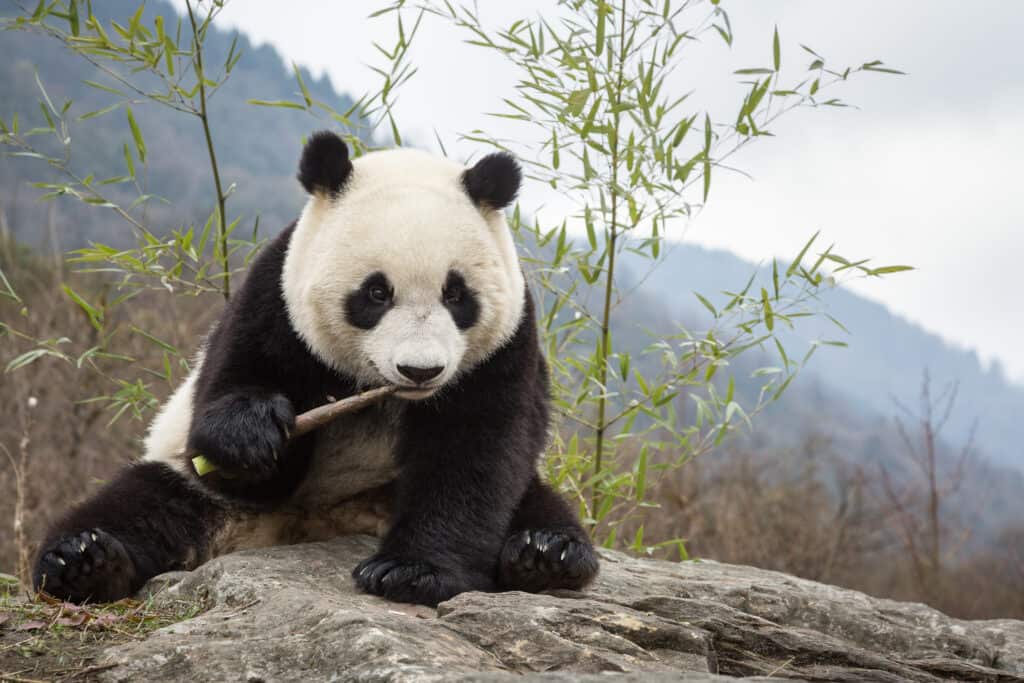
The giant panda, native to central China, has evolved several adaptations to survive on a bamboo diet despite being classified as a carnivore. Its wrist bones function almost like thumbs, allowing it to grasp bamboo stalks with surprising dexterity. They have powerful jaw muscles and molars designed for crushing tough bamboo, which makes up over 99% of their diet. Their slow metabolism helps them conserve energy, as bamboo provides limited nutritional value. They are solitary animals, with large territories to ensure sufficient bamboo resources. The distinct black and white coloration may serve as camouflage in snowy and forested habitats, and it’s also believed to help with temperature regulation. They are a conservation success story, with efforts in breeding programs and habitat protection gradually increasing their numbers. They remain a vulnerable species, though habitat loss and fragmentation continue to threaten their survival.
Galápagos Tortoise (Chelonoidis nigra)
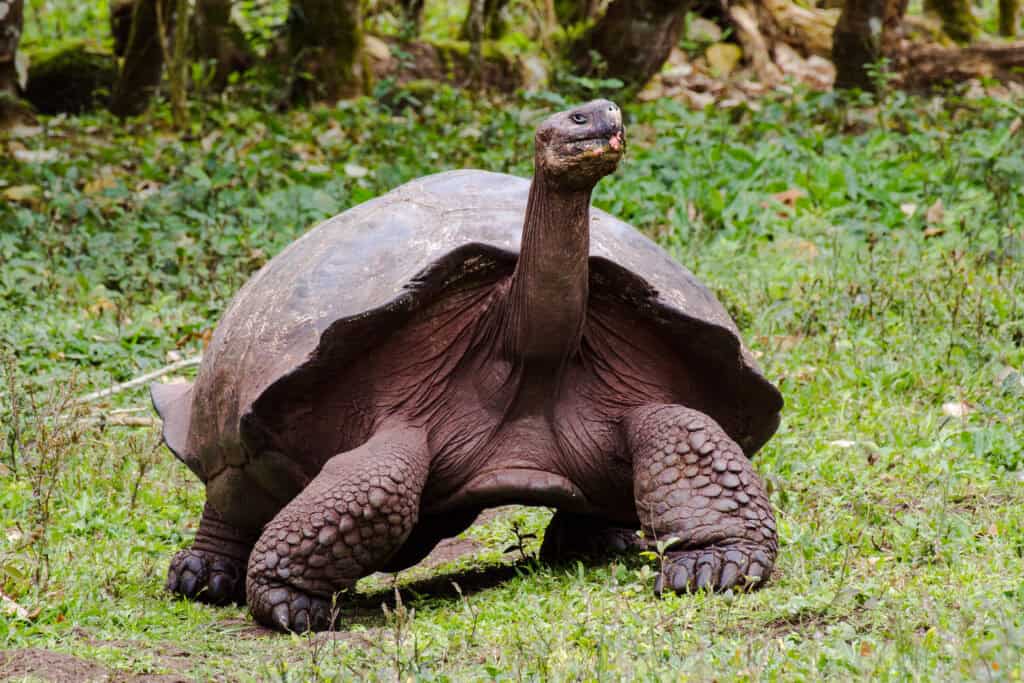
The Galápagos tortoise, native to the Galápagos Islands, has evolved distinctive adaptations to survive in its isolated environment. Its large size and slow metabolism allow it to store large amounts of water and go for extended periods without food or water. Its shell shape varies by habitat, with “saddleback” shells adapted for reaching higher vegetation in drier areas and “dome-shaped” shells in lush environments. Their long necks assist in accessing vegetation above ground level, providing a food source during dry seasons. They have an herbivorous diet, feeding on grasses, fruits, and cacti, and can digest toxic plants that other animals avoid. They also have a high tolerance for salt, which allows them to consume coastal plants. Though their numbers have improved through conservation, they remain vulnerable due to habitat destruction and invasive species. Conservationists continue to protect these tortoises through breeding programs and habitat restoration.
Kakapo (Strigops habroptilus)
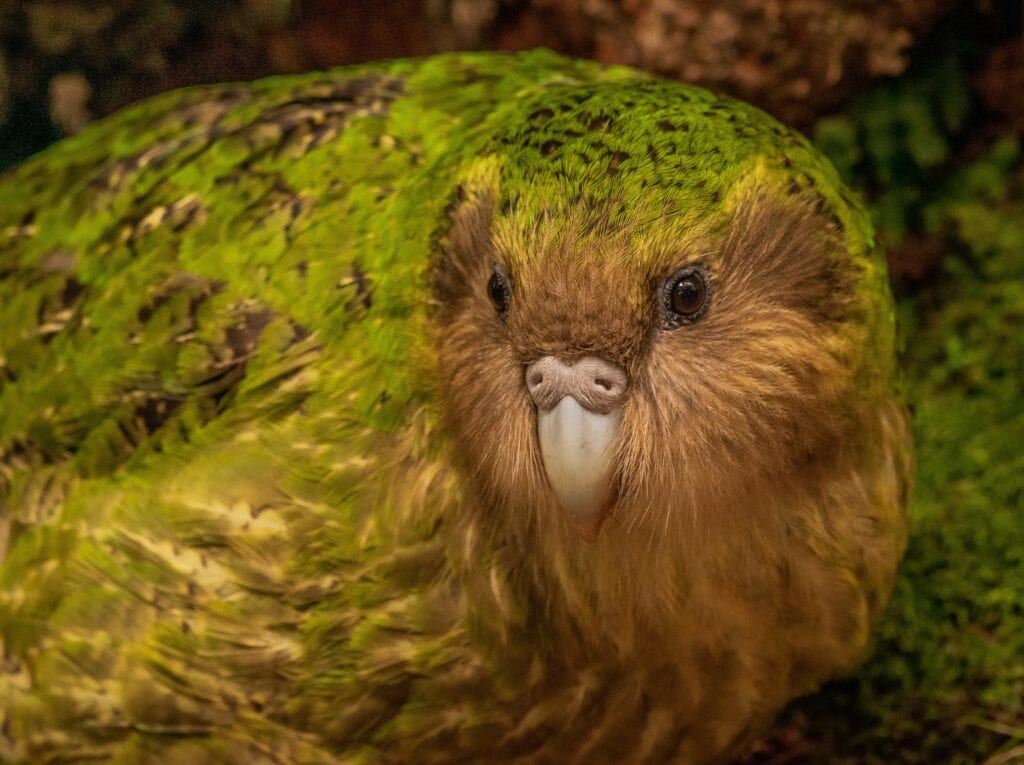
The kakapo, a flightless parrot from New Zealand, has remarkable adaptations suited to a nocturnal, ground-dwelling lifestyle. It is the world’s only flightless parrot and has evolved powerful legs to navigate its forested habitat. Its green, mottled feathers provide effective camouflage among foliage, protecting it from predators. Its keen sense of smell, unusual among birds, helps it locate food at night, primarily consisting of fruits, seeds, and plants. They have a unique breeding system called “lekking,” where males gather to compete for female attention with booming calls that can be heard up to five kilometers away. Their low reproductive rate and reliance on specific habitats have contributed to their endangered status. Conservation programs in New Zealand have helped stabilize their population through captive breeding and predator control. Today, their numbers are still critically low, but intensive conservation efforts are ongoing.
Thorny Devil (Moloch horridus)
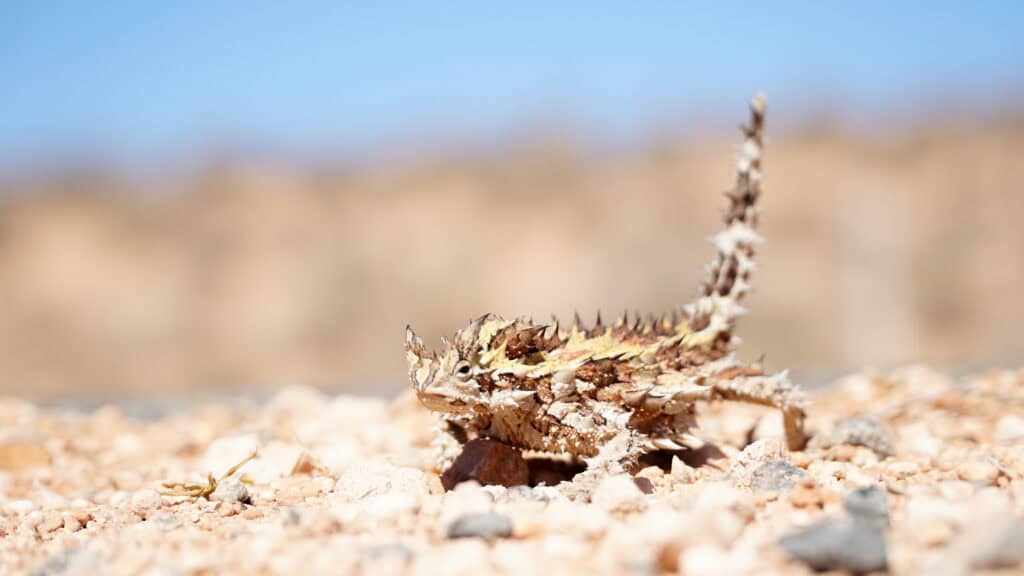
The thorny devil, native to Australia, is a small lizard with unique adaptations for survival in the desert. Its body is covered with thorn-like spikes that deter predators and help with thermoregulation by collecting dew. Its skin is capable of absorbing water directly from moisture on the ground, which then channels it to its mouth. Its diet is highly specialized, consisting almost exclusively of ants, which it consumes using a sticky tongue. It can change color depending on temperature and environment, providing camouflage against sand and rocks. It has an unusual walk, a slow and jerky movement, which may confuse predators. This species is able to store fat in its tail, sustaining it during food shortages. Though not currently endangered, habitat disruption poses a threat to the thorny devil’s delicate desert ecosystem.
Tardigrade (Tardigrada spp.)
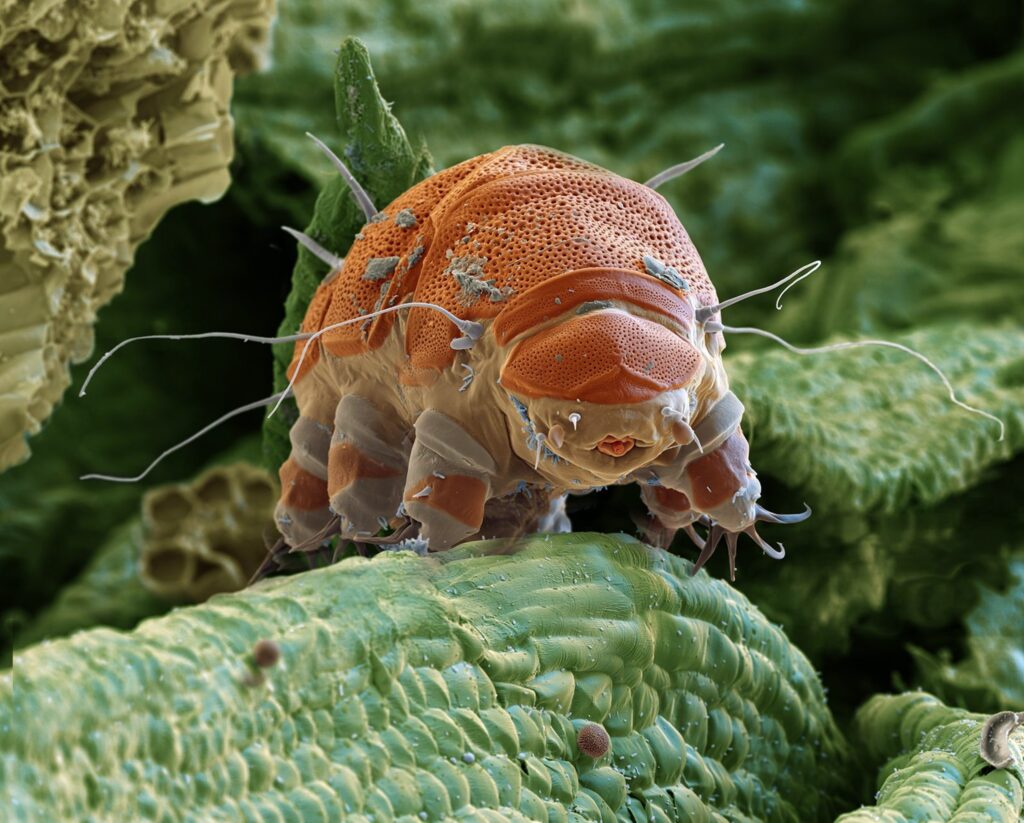
Tardigrades, also known as water bears, are microscopic creatures famous for their incredible resilience to extreme environments. They can enter a cryptobiotic state, suspending all metabolic functions, allowing them to survive desiccation, freezing, and radiation. They have a unique protein that protects their cells from damage, enabling them to withstand conditions lethal to most other life forms. They can survive in extreme temperatures ranging from -272°C to 150°C and pressures up to six times that of the ocean’s deepest trenches. They are also known to survive in space, enduring high levels of cosmic radiation. When rehydrated, tardigrades can resume their normal metabolic processes and even reproduce. Although not endangered, they play an essential role in understanding biological resilience. Their unique adaptations are a subject of interest for scientists studying survival mechanisms in extreme environments.
Dhole (Cuon alpinus)
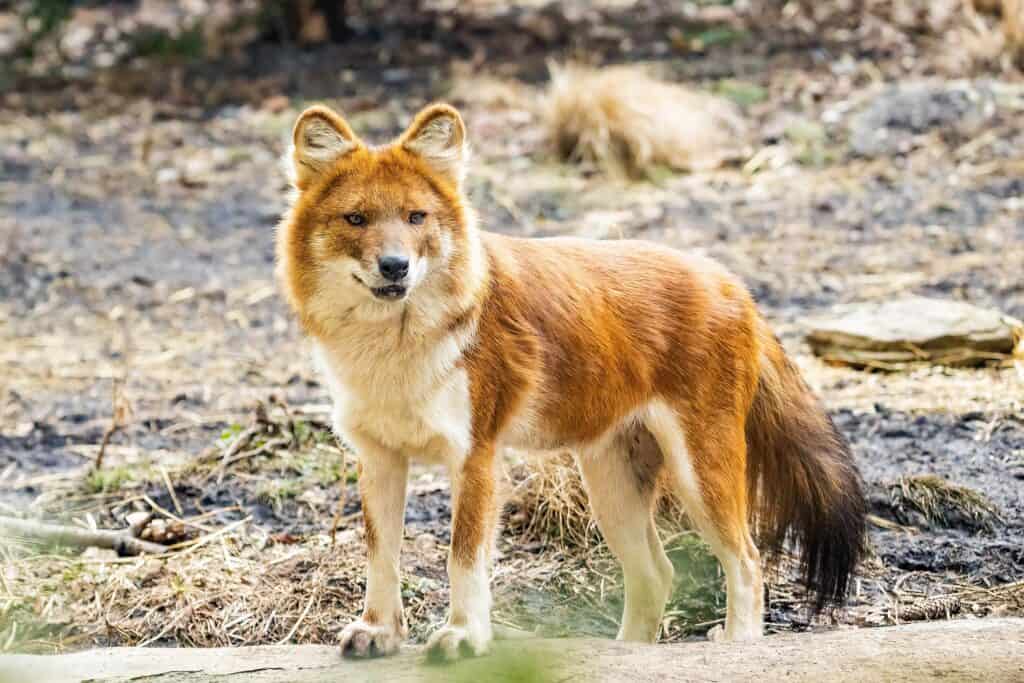
The dhole, or Asiatic wild dog, is a highly social canid found in South and Southeast Asia, known for its adaptability in diverse environments. They have a broad diet that includes small mammals, birds, and even larger prey like deer, showcasing their versatility as predators. Their hunting strategy involves coordinated pack attacks, which allows them to take down prey much larger than themselves. Dholes communicate through distinctive whistles, enabling pack members to coordinate while hunting in dense forests. Their streamlined body and long legs are built for endurance, allowing them to chase prey over extended distances. They are excellent swimmers, which helps them hunt near rivers and wetlands.
This article originally appeared on Rarest.org.
More from Rarest.org
20 Keystone Species That Play a Crucial Role in Their Habitats
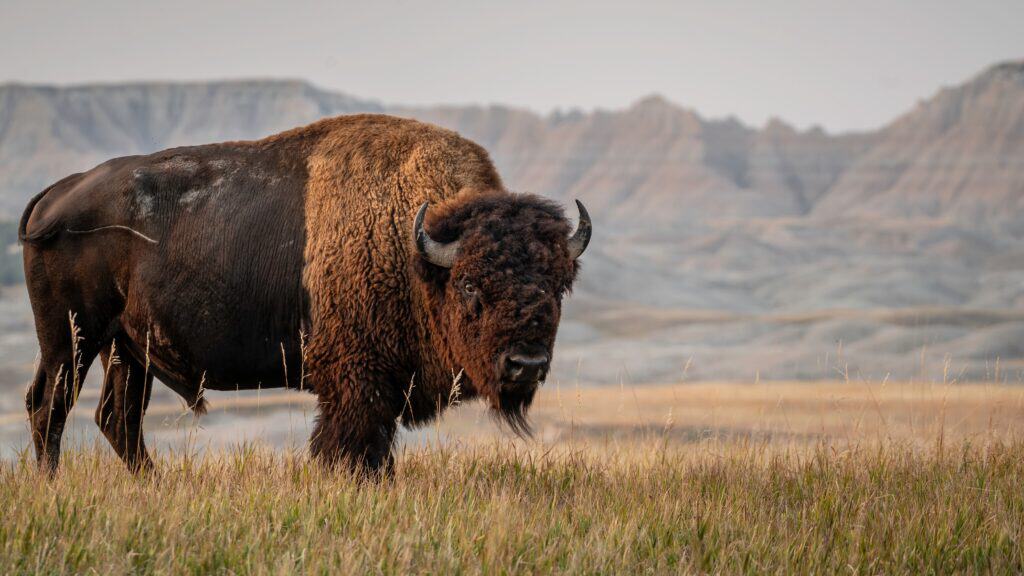
Keystone species are essential to maintaining the balance of their ecosystems. Without them, the structure of the habitat could change dramatically. These species often influence many other organisms in their environment, helping to regulate populations and maintain biodiversity. Read More.
15 Majestic Birds of Prey That Inhabit Rugged Mountains
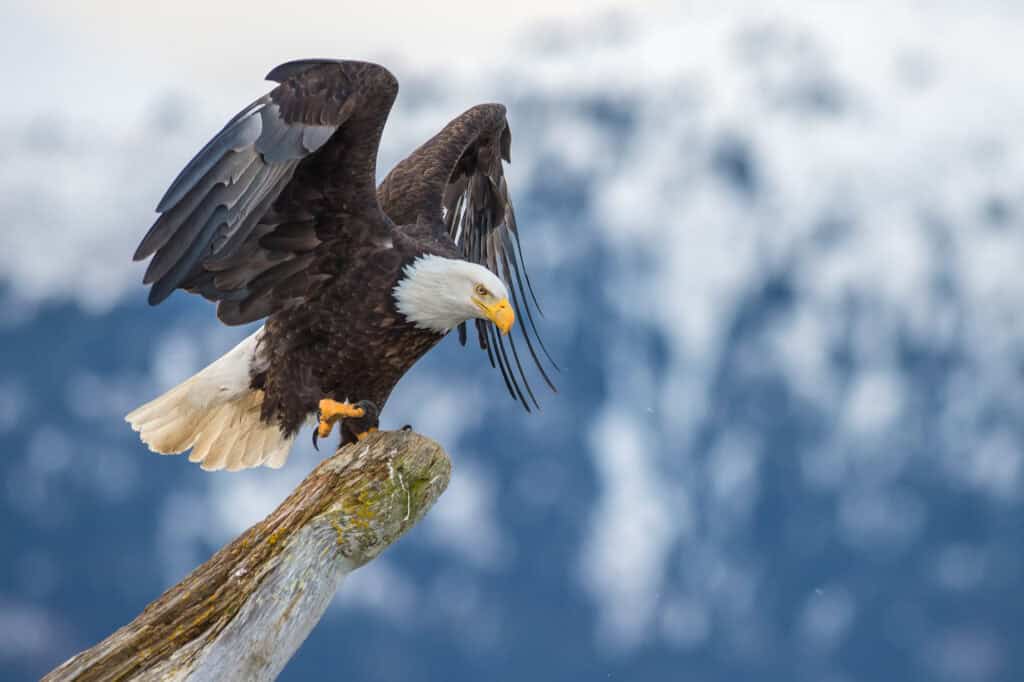
Rugged mountain landscapes are home to some of the most awe-inspiring and powerful birds of prey on the planet. These majestic raptors have evolved to thrive in harsh, high-altitude environments, where their strength, agility, and keen hunting skills are put to the test. Read More.
10 Beautifully Preserved Ancient Cities Buried Beneath the Earth

Ancient cities hold mysteries of civilizations long gone, hidden beneath the earth for centuries. These cities, once bustling with life, are now beautifully preserved time capsules of history. Read More.
